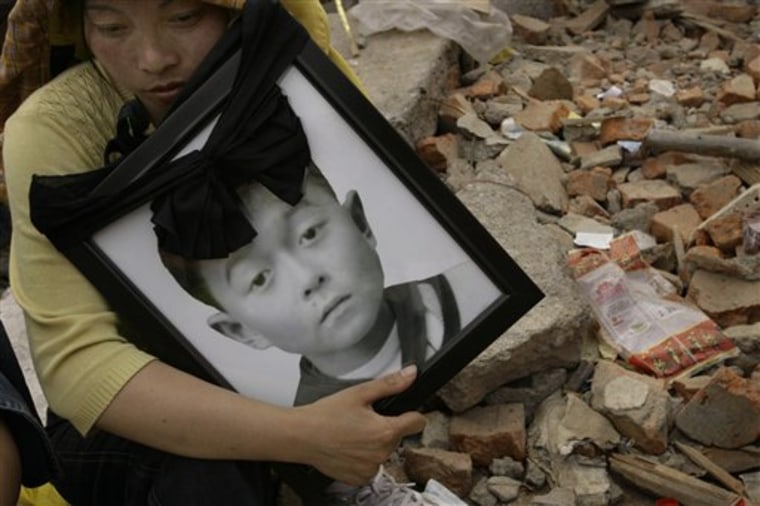A little over a quarter of the 70,000 people who died in a massive earthquake that struck Sichuan in May have been identified, a Chinese official said Friday, as authorities rushed to prepare stricken areas for the coming winter.
Li Jiang from the Sichuan provincial propaganda office said 19,065 bodies have been identified since the May 12 quake razed huge swathes of the lush, mountainous southwest province.
Due to a translation error at a news conference by Wei Hong, the executive governor of Sichuan, the figure was originally thought to be the number of students who died in the quake. Another 18,000 people are still missing.
The government still has not given a separate toll for children who were crushed when their shoddily built schools collapsed, but has said that about 7,000 classrooms were destroyed. Their deaths have become a sensitive political issue, with parents staging protests demanding investigations.
Many of the parents also say they have also been subjected to intimidation and financial inducements to silence them.
But Wei said he had not heard of such situations.
"The great majority of the family members of the children and students who died in the earthquake are gradually walking out of the shadow of losing their family member," Wei said. "They are now facing up to reality and a new life."
He said verifying the number of students who died was a complex process and there was "no final, accurate figure" yet.
"The government is also very sorry about their deaths," Wei said. "Our government will try their utmost to properly resolve the questions raised by the family members and parents of students who died in the earthquake."
He blamed the destruction of public service buildings — tens of thousands of schools and medical institutions among them — to the intensity of the magnitude-7.9 quake.
Admission of low construction standards
In September, a Chinese government scientist acknowledged that a rush to build schools in recent years likely led to construction flaws causing so many of them to collapse — the first official admission that low construction standards may have been behind the student deaths.
Ma Zongjin, chairman of an official expert committee on quakes, said poor quality construction materials were one possible reason more than 1,000 schools were damaged.
Engineers and building experts sent to the disaster zone by the government to study damage have also raised questions about poor construction, bad urban planning and lack of enforcement of building codes. Parents and even rescuers have pointed to steel rods in broken concrete slabs that were thinner than a ball point pen.
Wei said that millions of those displaced in the earthquake still need quilts and repairs to their homes if they are to survive the coming winter.
The earthquake displaced millions and left China struggling to carry out reconstruction work.
Chen Kefu, deputy director of Sichuan's civil affairs department, said there was a shortage of 330,000 quilts for the quake victims and electric blankets and heating appliances were also needed.
Harsh winter expected
Wei said relief work was important because experts were predicting temperatures would be slightly colder in the coming months compared to previous years.
"During the post-disaster period of relocations, we have placed at the core the work of making sure that thousands of affected people, especially those living in extremely cold and remote rural areas, will live safely and warmly through this wintertime," Wei said.
Wen said that as of Nov. 12, nearly 200,000 homes had been rebuilt, 685,000 homes were under reconstruction, but that another 1.94 million households still needed to be rebuilt or repaired.
More than 1,300 schools have been reconstructed or are currently being worked on, and site selection had started for relocating 25 townships, including Beichuan and Wenchuan, two of the most devastated areas.
